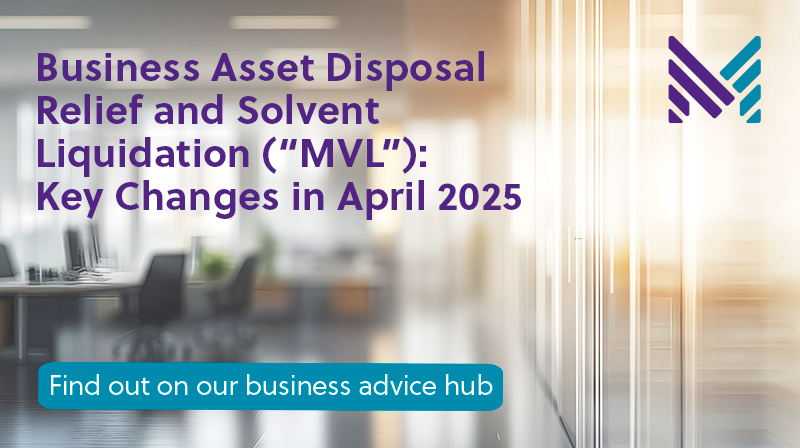3 Jan 2025
Business Asset Disposal Relief and Solvent Liquidation (“MVL”): Key Changes in April 2025

As a business owner in the UK, planning your exit strategy can be complex,
especially when it comes to selling or disposing of business assets. One option
that has long been available for entrepreneurs is Business Asset Disposal
Relief (BADR), which currently offers a reduced Capital Gains Tax (CGT) rate of
10% on qualifying assets up to a lifetime limit of £1 million. This relief is
often a critical factor in decisions related to solvent liquidations, providing
significant tax advantages when winding down a business.
Solvent Liquidation
and Business Asset Disposal Relief
In a solvent liquidation, a company can distribute its assets to
shareholders after settling any outstanding debts. Business Asset Disposal
Relief can apply to the sale or transfer of business assets, including shares
in a trading company. If you are a shareholder in a company being liquidated
and you meet the necessary conditions, you could benefit from the 10% CGT rate
on your portion of the liquidation proceeds.
One of the key eligibility requirements for BADR is that the individual must have owned at least 5% of the company's shares for a continuous period of two years prior to the liquidation. Additionally, the company must be a trading business or the holding company of a trading group to qualify for relief. Investment businesses such as property rental companies may not qualify.
Impact of Tax Changes
in April 2025
In April 2025, important changes to the UK's tax system will take effect,
increasing the 10% rate up to 14%
For business owners considering solvent liquidation, this means that there is an urgent need to act before these changes come into effect. If your assets exceed the lifetime limit, any gains beyond £1 million will be subject to the standard CGT rate which, from October 2024, was increased to 18% for basic rate taxpayers and 24% for higher rate taxpayers. As a result, timing will be crucial for maximising the tax benefits of BADR.
Take Action Before
April 2025
With these upcoming changes, it’s essential for business owners to review
their exit plans carefully. If you’re planning a solvent liquidation, acting
before the tax changes in April 2025 can help you secure the maximum relief
available. By understanding the evolving rules and seeking advice from tax
professionals, you can ensure your business exit is as tax-efficient as
possible.
Conclusion
Business Asset Disposal Relief provides an invaluable opportunity to reduce
your tax liability when disposing of business assets. However, with upcoming
changes in April 2025, it’s crucial to plan ahead and consider solvent
liquidation before the rate increases.